"The College’s welfare system is fantastic."
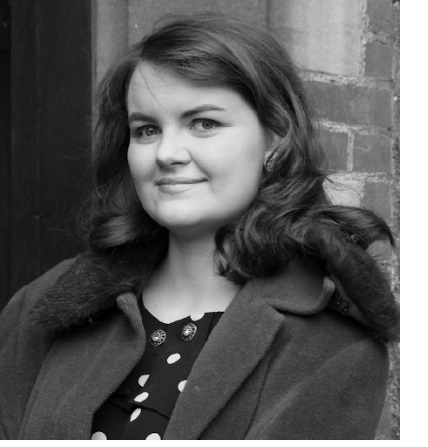
Ruby is from Brookwood, a village in Surrey, in the South East of England, and wrote this at the end of her second year studying History of Art here at Christ’s College, Cambridge. At school, Ruby took A-Levels in Art, History of Art and Early Modern History, as well as doing an AS-Level in English Literature and an EPQ on the power of Versailles.
What aspects of your course attracted you to it specifically?
There were several reasons why I chose to study History of Art at Cambridge. The reputation of the university did play a huge role in my decision to apply, but also the course itself appealed to me. When I first applied, there was very little to no contemporary art focus within the course. When I asked on my open day, the lecturer mentioned that if you want a traditional course you should come to Cambridge. This was right up my street!
I’m quite niche in what periods I like and don’t like, staying very much in French and British art and architecture from 1600-1900. In other universities the focus was very on non-Western and contemporary art. However, having been here elements of the course has changed. Each year there are new optional papers, and unfortunately, they are not all to my taste. Contemporary elements have also been added to the mandatory subjects like Approaches to Art History. This has proved to be a good thing, and has forced me out of my comfort zone, something that studying at Cambridge is all about.
Why did you apply to Christ’s?
To be completely honest, I was so sure that I would never be able to get into Cambridge that I applied to the College that was at the top of the list alphabetically! I looked around Christ’s on one of the Cambridge Open Days, and for some reason thought that it was the only College that accepted History of Art applicants. It wasn’t until I was offered an interview that I started to look into what Christ’s could offer me. I loved the central location, the fact that it is one of the older Colleges, and its circular front court (Christ’s is the only College in Cambridge that has one!). Being in certain buildings affects my moods and work production - I’m happiest when I’m surrounded by history and Christ’s has loads of it. I’m really happy that I did get in, and I have loved my first two years here.
What do you think of the collegiate system in general?
I think the collegiate system is a good thing. I love the traditions of Cambridge and feeling immersed in history, so I don’t think I would have done as well at a more modern College or university. It also allows you to socialise with College members and create larger friendship groups, or even just get to know more people rather than staying within your department. I also feel safer in an enclosed and not overly large College, especially with the porters. This is one of the reasons why I didn’t want to move out into a house in my second year.
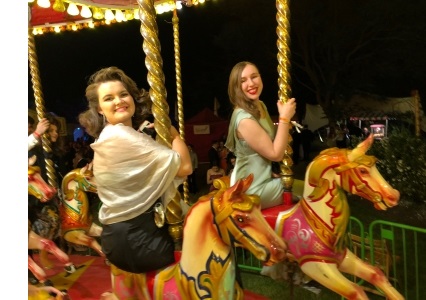 Do you think that Christ's is a supportive College?
Do you think that Christ's is a supportive College?
The College’s welfare system is fantastic. I’m not ashamed to say that I come from a lower income family, and I have needed help with financial problems during my time at Christ's. The College has provided financial support including rent bursaries, extra cash for when times are hard and travel grants so I can see artworks in Europe, something I thought I would be unable to do until I got a job. I also suffer from a chronic back problem and the level of support I have received is amazing. The College provided money so I could buy a special chair that supports my back while I work, and has also paid for some of my physio appointments.
How did you find the application process?
I had little problem with the online application process - I was quite lucky, as I went to a sixth form college that had experience in assisting students in applications to Oxbridge. I had a pre-interview admissions assessment, which was to compare three pairs of images with each other. It would be two portraits, landscapes, etc. from different time periods. You didn’t have to recognise the work, but it did help!
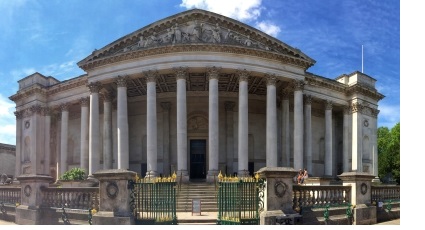
Fitzwilliam Museum (Credit: Sir Cam)
The interview was slightly different to what I expected. The advice I received, to learn every part of your personal statement as they will pick up on each little sentence, did ring true as I had specific questions on various things I'd mentioned. The questions were challenging and I had to think hard to work out my answers. I think they wanted to see how I thought or worked things out. That was the main difference I found between Cambridge and other university interviews - they really wanted to see you think.
What advice would you give prospective applicants?
If you haven’t done a History of Art A-Level, then you could practice for the written exam using past papers available online, especially from the Visual Analysis and Interpretation module. You will have to write a lot in a short amount of time, so even setting yourself exercises such as comparing images will be really helpful! Also, remember that the History of Art course at Cambridge can change from year to year, so don’t set your heart on an optional paper when applying.
Before you came to Cambridge, what were you looking forward to and what were you most worried about?
I was most worried about being so far away from home, and Cambridge’s short terms (eight weeks each) were something that drew me to this university. I was excited to start, but was a bit worried about my peer group in the department. History of Art does have a reputation of being an upper-class person’s subject, but upon arriving I found that this wasn’t the case. Yes, there are some incredibly wealthy people in Cambridge but you can always find someone with the same background as you.
I found it quite easy to settle in - although I love being at home, I am quite comfortable with my own company so I viewed it more like a holiday than moving out. The short terms really helped with this! I liked the cheap cinema tickets at the Arts Picturehouse in Fresher’s Week. I’m not a huge club person, so I went to the Picturehouse several times. I loved starting my lectures, I had been really looking forward to it and I found them fascinating. Supervisions initially intimidated me, as you naturally feel like you’re in competition with the other supervisees. But as soon as you get past this and work with rather than against the other students, they’re great fun. It’s really helpful, especially if you’re able to share essays with your peers, as everyone will have done slightly different reading so you all have a different argument.
How is your course taught?
In my second year I had one supervision a week for my optional papers and one every two weeks for the mandatory approaches course. For each of these I had to write a 2000-word essay on lots of different subjects, not always something that had been discussed in lectures. The lectures are mandatory - History of Art is quite an intense subject and if you miss one lecture you will often miss an entire topic that could come up in the exam. Outside of the lecture hall, we have onsite visits around Cambridge. In your first year, you study lots of buildings around Cambridge and do up-close object handling at the Fitzwilliam Museum. Elements of this remains in the other two years, although it does depend on the course you take. There are also trips that relate to the optional paper you have chosen. This year I went to Holkham Hall in Norfolk, as I took the British Architecture course.
The best thing is the quality of the lectures, especially if it’s a subject you’re interested in, as the lecturer’s own passions really come across. My favourite lecture this year was a Robert Adam vs William Chambers lecture in my optional paper. Adam is a personal favourite, and the comparison to his greatest rival was very fascinating. I enjoyed all the supervisions for my optional papers. They have been really intimate and relaxed, especially in my course on Paris between the Revolutions as we were set work different to the normal mode of essays. One example of this is when we were asked to create a catalogue entry on a work from the 1820's, something I hadn’t done before.
"The best thing is the quality of the lectures, especially if it’s a subject you’re interested in, as the lecturer’s own passions really come across."
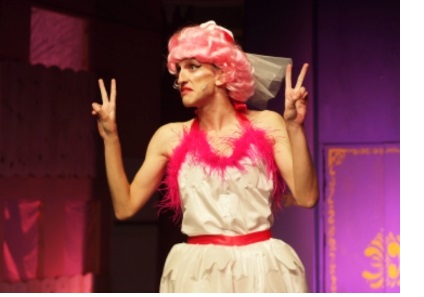
at the ADC theatre
What do you do in your spare time?
I briefly helped run the College’s arts society, CAS, something that was left to me by the previous founders. I also was Costume Designer for the Footlights Pantomime this year, which was an amazing opportunity as the budget was nearly limitless! I got to do loads of fab designs and see my drawings become reality, which was amazing. It was also all sweets themed, so I could do loads of great colours! It was quite easy to get involved with theatre in Cambridge, and Christ’s has its own drama society (CADS) so if the big shows aren’t your thing you can still be involved. There’s also a website, CamDram, that shows the new shows that are looking for vacancies. They will often train you in what to do, so don’t be put off if you have no prior experience!
What have you enjoyed most and least about life at Cambridge this year?
I loved Peterhouse May Ball - it was really retro and and the dress code was white tie. I had so much fun! Seeing the completed results of my costumes for the Panto was also amazing and I really enjoyed that. As Panto was such hard work, something I admittedly didn’t realise when I signed up, the last crunch would probably be my least favourite part! It was a caffeine-fuelled frenzy over a weekend and through the dress rehearsal - I was still sewing two minutes before the curtain went up.
What are you most looking forward to next year?
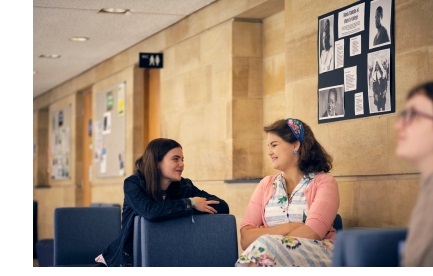 I’m quite excited to start my dissertation. I know it’s going to be lots of work, but I really enjoy the topic I’ve chosen. I’m writing on Robert Adam and female patronage - I chose this as not only was Adam revolutionary in pioneering the classical revival in England and Scotland, but I feel a personal connection to his designs as some of my favourite places were designed by him. I love studying the role of women in society in the 1760-1790’s, the age of the Blue Stocking Group. As I’m so picky with my subjects the optional papers I’m taking next year aren’t exactly my favourites, but I’ll still find them really interesting. I’m doing Tudor Visual Culture, and Renaissance Prints and Drawings. I’m hoping that my dissertation will help towards my future career plans. I would love to work for the National Trust or English Heritage, ensuring that British buildings are protected.
I’m quite excited to start my dissertation. I know it’s going to be lots of work, but I really enjoy the topic I’ve chosen. I’m writing on Robert Adam and female patronage - I chose this as not only was Adam revolutionary in pioneering the classical revival in England and Scotland, but I feel a personal connection to his designs as some of my favourite places were designed by him. I love studying the role of women in society in the 1760-1790’s, the age of the Blue Stocking Group. As I’m so picky with my subjects the optional papers I’m taking next year aren’t exactly my favourites, but I’ll still find them really interesting. I’m doing Tudor Visual Culture, and Renaissance Prints and Drawings. I’m hoping that my dissertation will help towards my future career plans. I would love to work for the National Trust or English Heritage, ensuring that British buildings are protected.
August 2019
Please be aware if you're considering an application that our student writers describe their experiences. Although the majority of the information stays the same, some details may change from year to year. Do read the student profiles in combination with our undergraduate admissions pages for full information.
Back to Student profiles page / History of Art at Christ's / Next: Arianna's profile
